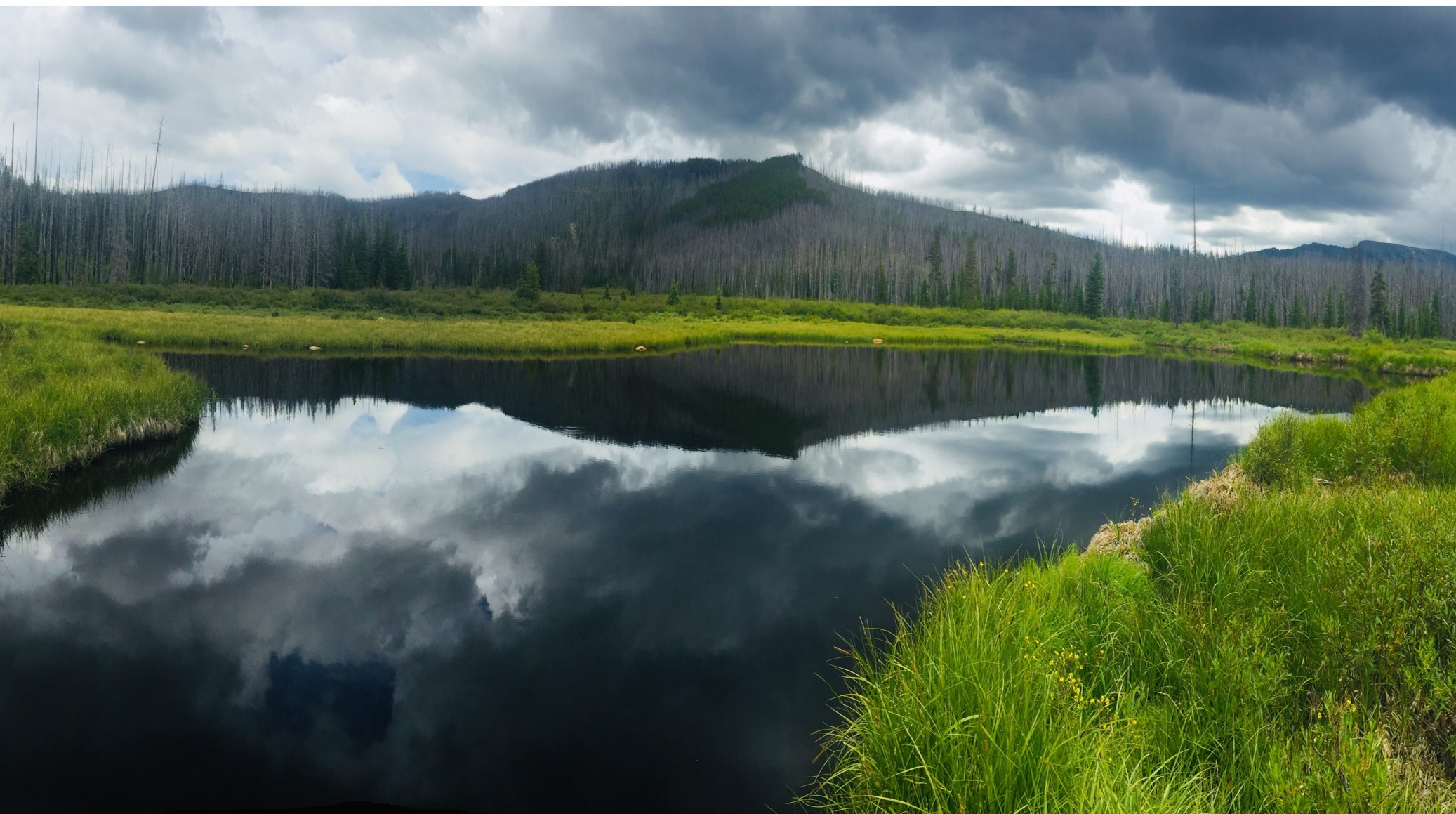By Olivia Box
As wildfires grow hotter and bigger across the American West, people are turning to a new breed of firefighter: the American beaver. New research suggests that beaver’s dam-building creates lush, wet fire breaks in otherwise dry landscapes, helping to slow and contain wildfires.
To Emily Fairfax, an ecohydrologist at California State University Channel Islands, beavers are more than toothy rodents with a penchant for converting streams into ponds. Fairfax likens them to Smokey the Bear, thanks to create oases of flame-resistant vegetation.
These green zones can be quantified and measured using satellites that measure greenness and vegetation density. Fairfax examined satellite images of land in five western states scorched by massive wildfires before, during, and one year after a fire. A consistent trend emerged: the areas that had beaver dams before the fire stayed green during and after the fire, while the rest of the landscape was burned. This meant beavers were contributing to keeping patches of the landscape healthy, in turn preserving habitat for wetland species.
These rodents might also help slow wildfires. Fires spread faster across uniformly dry landscapes covered with fuel such as trees and grass, quickly eating up whatever is in their path. Patchy landscapes like valleys dotted with beaver dams can slow a fire by forcing it to hop over hard-to-burn areas.
Fairfax compares the process to lighting a fire when camping: “Do you grab a wet stick? No, it would never burn. It’s the same in these riparian areas — they’re like a pile of wet sticks.” Now, Fairfax wants to investigate what happens to these beaver-created cool spots after a fire.
A research group at Eastern Washington University is trying to answer that exact question by sampling streambanks near beaver dams.
Alexa Whipple, a recent graduate student at Eastern Washington and a restoration ecologist with The Methow Beaver Project, an organization that promotes beaver restoration, has studied riparian recovery post-fire in Washington state’s Methow Valley. The Carleton Complex fires tore through the valley in 2014, burning more than 250,000 acres and destroying over 300 homes, making it the largest wildfire in state history.

Whipple sampled burned areas with and without beaver dams in the Methow River watershed to see how recovery varied. She found the streambanks with beaver dams had more woody species like willow and aspen, which create stable stream banks and provide shelter and habitat for insects and fish.
Areas with beaver also had more normal pH levels a few years after the fires. Ash can cause extreme fluctuations in pH, which can harm fish and amphibians adapted to specific water conditions. Dams can capture and store sediment by slowing stream flow, and Whipple suspects that as a result, ash settled more quickly in areas with beavers.
Whipple could see differences even at a glance. Where beavers lived, a parched landscape gave way to willow and cottonwoods. “I can’t imagine what the landscape looked like fully beavered,” she says, “If we had more water on the landscape, everything would be doing better — because water is life.”
Beaver aren’t always held in such high regard. Between 60 and 400 million beavers once filled river valleys across much of the U.S. But by the early 1900s, the fur trade had nearly eradicated the species. Today, there are an estimated 15 million beavers nationwide. Beavers are still widely considered pests to be shot or trapped because they down trees and flood roads. Fairfax refers to this persistent dislike for beavers as ecological amnesia — most people have no recent, good memories of beaver.
Both Fairfax and Whipple hope people can come to see beaver as partners rather than pests. Landowners are starting to embrace beaver restoration to bring water back to their pastures at a time when climate change is fueling more intense droughts. That includes irrigation projects in Utah and ranches in Nevada. Whipple says we need to learn to coexist with beavers, even if that means some nuisance flooding: “I see beaver as a great additional answer to some of our climate woes — but there has to be a level of tolerance.”
Even in places without beaver, humans are trying to imitate them. Katey Driscoll, a research ecologist with the Forest Service, is currently building human-made beaver dams as part of restoration efforts in the San Antonio Creek in New Mexico. These fake dams simulate the benefits of beaver dams, but often beavers may then be relocated or flock to the area on their own. Driscoll believes that given the quick effect that beavers have on the water table, their presence could help with firefighting. “Dams can pretty substantially alter the stream and floodplain quickly — if you put them in all over the place, you could have a big impact on wildfire.”
While beaver reintroduction today is focused on restoring wetlands and improving water storage, a growing appreciation for their natural ability to mitigate wildfire could help win over more fans, says Fairfax. “The idea that there are these big furry rodents that make refugia — that’s amazing to me.”
Olivia Box is a freelance writer and a graduate student at the University of Vermont where she is studying forests threatened by climate change and invasive pests. Her work has been featured in Northern Woodlands, Massive Science, and In These Times. You can follow her work at @oliviafaybox or email her at oliviafaybox@gmail.com.
This story was produced as part of NASW's David Perlman Summer Mentoring Program, which was launched in 2020 by our Education Committee. Box was mentored by Warren Cornwall.

